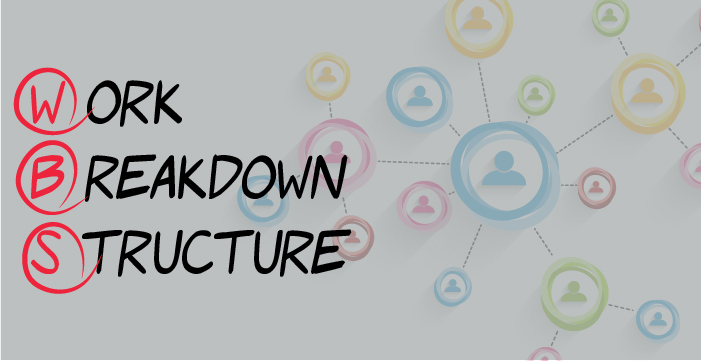
In today’s technology-driven world, software development is changing its requirement list frequently. Agile is a software development methodology that essentially focuses on satisfactory project delivery to clients. Agile methodology is continually ready to accept the change and work on comprehensive specifications to turn a project into a deliverable product.
An agile mindset leads to improved support between the teams, allows the organizations to react to any feedback they get, and make changes that might occur. Finally, this results in having a much better product and reduced wastage of resources. Whilst the key to becoming Agile is just to embrace the approach and what it actually stands for. In this regard, there are various methodologies you can adopt, each having its own significance in different environments.
Kanban vs. Scrum
Kanban and Scrum are the two Agile approaches designed for streamlining work and increasing efficiency for optimum results.
To get a clear picture of these two methodologies, let’s take a glimpse at Scrum and Kanban to discern which one could be more beneficial for your project.
What is Scrum?
Scrum is a well-defined framework that enables coordination within the team on complex projects. The process provides a holistic methodology wherein the whole team works together to attain a common goal. The process intends to bring results within a short span emphasizing teamwork and iterative progress.
A Brief Preview of the Scrum Process
While using the Scrum framework, the team works with a series of iterations and sprints where they assess what is working and what is not.
There are 4 Main Stages of Iteration or Sprint:
- Sprint planning– Members involved in the team, plan to decide what to build in the next iteration.
- Daily stand-up– These are the meetings that don’t take longer than 15 minutes, so as to ensure everyone is on the same page. This takes place throughout the iteration phase to know the latest updates.
- Sprint demo– This is a quite longer meeting wherein the completed products are demonstrated.
- Sprint retrospective – A review regarding what went well, what could be improved, and discussions regarding how to make the next iteration much better.
The process ensures that everyone in the team is aligned properly and knows what they should be working on at any given instance.
When to use Scrum Methodology?
Scrum methodology has been adopted by thousands of professionals in enterprises across the globe. It is an Agile methodology that requires complete streamlining from idealization to implementation.
You can come up with a complete project implementation plan wherein you can assign the role of the team members and allot intervals for project completion as well. This is an ideal approach to consider if your team or project requires continuous streamlining.
Roles and Responsibilities of Scrum
The scrum methodology revolves around 3 major roles:
- Product Owner – The Product Owner is liable for defining and finalizing the tasks list and accomplishing it in the given time interval.
- Scrum Master – The Scrum Master helps the development team and the product team for accomplishing the process by adhering to specified rules and policies necessary for project completion and averting ambiguity between them.
- Development Team – The development team work on a specific project. These individuals include testers, business analysts, and programmers.
Challenges Faced by Scrum
Scrum is a time-tested methodology that has provided efficacious results to numerous organizations, but there are a few aspects that can hinder its efficiency. Firstly you need to be experienced and skilled enough to use it. Just not only the Scrum Master but even the team should have high-level skills to get Scrum working. This methodology demands the team and organization using it should be fast enough in all aspects.
What is Kanban?
Kanban is one of the popular frameworks to implement Agile software development that mainly focuses on continual delivery without overstretching the development team.
Here, the work items are characterized on the Kanban board so that the team members can take a look at the work state at any instance. Unlike Scrum, this is designed to help teams to work together more effectively. The reason for implementing Kanban is the productivity and efficiency of the team. This allows them to deliver superior quality work.
How does Kanban work?
Kanban provides you with a visualization of the process and the real tasks to be accomplished. This methodology helps your team to work effectually, ensuring everyone knows what has to be done. The process follows a certain set of principles to improve the workflow and then streamline the tasks.
Kanban has two significant elements namely: the cards and the boards. The board can be physical, but the software team has a preference for a virtual board as this could be easily accessed from various locations and thus makes the team collaboration more proficient.
Usually, the board can be split into three sections, namely-“To-Do”, “In Progress”, and “Done”.
The other key component is the cards, and each card should signify a specific task in a project. At times, each card requires some important piece of information. They are:
- What should be done?
- Who’s responsible for it?
- How long it is estimated to consider?
Upon combining, the cards and the board deliver a clear way of visualizing what is being done, what needs to be done in the future, and ensuring that every team member is in the same phase.
When to use Kanban?
When it comes to the project development cycle, Kanban is an ideally chosen methodology as it requires continuous improvement in gradual increments. Kanban board helps the team to have a visual idea regarding what’s going on in the project and what is yet to come.
You can lay out an entire project plan and apply the Kanban methodology in order to ensure that you are in the same phase and the assigned tasks are being completed on time.
Basic principles associated with the Kanban process
- Visualize the workflow – A thorough observation and understanding of the current workflow will definitely help you to visualize how work is progressing throughout the process.
- Limit work in progress – When you limit the work that is in progress, the team can complete work well ahead of time prior to moving to the next one. Accordingly, it is necessary for the work that is in progress to be marked as completed so that new tasks can be assigned to the team.
- Managing the workflow – The whole reason behind implementing the Kanban methodology is to manage and enhance the workflow, in an attempt to get the work done quickly.
- Make explicit process policies – While working as a team, it is essential for every team member to be aware of all the policies, rules, and regulations. It encourages them to work with collaboration and harmony.
- Implement feedback loops – Feedback loops are considered an integral part of Kanban wherein daily stand-up meetings are held for team synchronization and to know what they did the previous day and what’s on the list for today. An average length of a stand-up meeting should be between 10-15-minutes, and at times it may reach up to an hour depending upon the size of the team and topics.
- Continuous Improvement – Kanban provides a way to accomplish continuous improvement and sustainable changes within the enterprise level through a shared vision of a better future and concerns that need to be overcome. It acts as a base for continuous evaluation and improvement. It also helps in making teams more effective as well as productive. Teams having a shared understanding of workflow, risks, and processes are more likely to step towards improvement.
Challenges Faced while using Kanban
Kanban is pretty simple to use in contrast to Scrum, but there might be certain issues while using the Kanban board correctly. If using an updated Kanban board, there can be issues relating to the project development process. Try avoiding a complex board as it can adversely affect your project.
Roles and Responsibilities of Kanban
Kanban doesn’t specify any pre-defined roles and responsibilities. Individuals are neither responsible for any phase in the project development nor accountable for the team’s performance. Identifying the issues, sharing the task status and changes to be made are displayed by the assigned individuals on the Kanban board.
Deciding Between Kanban and Scrum
There is no single fit approach when it comes to the Agile framework. So, it becomes imperative to understand the organization type, various types of projects, and the team upon identifying a suitable project development approach that boosts improvement provides fast delivery of work, and reduces inefficiencies.
Whatsoever it is, ensures to take a well-thought decision. In case you are confused, try using both the frameworks and confirm what went well and what went wrong in either of the cases.
If your team is in charge of enhancing the feature development feedback then it would be better to go with scrum. In case, if your team is in charge of maintenance and requires you to be more reactive then you have to consider Kanban. Gradually, the need of every team is different and based on the requirements, the methodologies you choose need to be dedicated to the achievement of the goals.
Now you know everything about Kanban versus Scrum, and which can better suit your requirement.














